Saudi Arabia transforms mining sector
23 February 2024

This month's Agenda also includes: Mergers soar in global mining sector
Saudi Arabia’s metals and mining industry is playing a pivotal role in the country’s non-oil growth trajectory.
Commercial exploitation of the kingdom’s massive mineral resource base, most of which lies untapped, is a key component of Riyadh’s Vision 2030 socioeconomic transformation strategy.
The kingdom took the first step towards realising the commercial potential of its mineral resources when it enacted a new mining investment law in 2021. Since the law came into effect, the Ministry of Industry & Mineral Resources (MIMR) has awarded more than 2,000 mining permits to local and foreign firms under its accelerated exploration initiative.
Addressing the Future Minerals Forum (FMF) in Riyadh in early January, Bandar Alkhorayef, the kingdom’s industry and mineral resources minister, said Saudi Arabia’s natural resources are worth $2.5tn – an increase of more than 90% compared with the 2016 estimated level of mineral reserves.
This near-doubling of its deposits of natural resources – which excludes fossil fuels and includes phosphate, gold and rare earths – is set to act as a stimulus to the kingdom’s nascent mining industry.
Mineral exploration drive
The MIMR is leading efforts to boost investments in the Saudi metals and mining sector, and Riyadh is providing impetus to the mineral exploration incentive programme with a cash injection of $182m.
“This programme will de-risk investments in our exploration, to enable new commodities, greenfield projects and junior miners,” Alkhorayef told the FMF.
To tap into overseas mining experience, the ministry signed four memorandums of understanding at the FMF.
Deals involving cooperation in the field of mineral wealth were signed with Egypt’s Petroleum & Mineral Resources Ministry, Morocco’s Energy Transition & Sustainable Development Ministry and Congo’s Mines of the Democratic Republic Ministry. A separate agreement inked with Russia involves geology.
Alkhorayef also announced the MIMR’s fifth and sixth mining concession licensing rounds at the conference in Riyadh. The rounds will offer local and international miners access to 33 exploration sites this year.
The ministry launched its last concession licensing round in August 2023, offering eight mining sites in the kingdom. Six of the sites are located in the Eastern Province – in Ghounan, Al Misnah, Al Samman, Ras Al Qaryah and the eastern and western zones of Salwa – and are understood to contain limestone ore, sand and other minerals.
The other two sites are in Riyadh Province, in Al Armah and Hofayrat Nesaah. These sites are estimated to hold gravel and sand deposits, among other minerals.
Prior to the August licensing round, the ministry announced in April that it had shortlisted 13 local and international companies for the exploration phase at the Muhaddad and Al Ridaniyah mining sites.
The Muhaddad exploration site, located in Bisha within the Asir geological terrane, covers 139 square kilometres and includes copper, zinc and lead ore deposits. The Al Ridaniyah exploration site is in the Riyadh region within the Al Dawadmi geological terrane. It covers more than 75 sq km and includes deposits of zinc and silver ore.
In January, the MIMR announced preferred bidders for another licensing round that it launched last April.
A consortium of local firm Ajlan & Bros Mining Company and Hong Kong-based Norin Mining Company is the preferred bidder for the Bir Umq exploration site. The site is located in the city of Mahd Ad Dhahab, in western Saudi Arabia. Covering about 187 sq km, the site contains deposits of copper and zinc.
As part of the licence awarded for this site, the winning consortium will invest over $29m in exploration activities. The consortium has also committed $4m for local community initiatives, including training and development programmes.
A consortium of UK-headquartered Royal Road and local entity MSB Holding Company has been picked as the preferred bidder for the Jabal Sahabiyah exploration site.
The site is located in the Tathleeth region, in the south of the kingdom, and covers an area of 283 sq km. Jabal Sahabiyah holds mineral deposits of zinc, lead and copper. The selected consortium will invest more than $5m in exploration work and another $120,000 in community development.
A consortium of Saudi Arabia-based Sumou Holding and Canada’s Kuya Silver has been selected for the Umm Hadid site and will invest more than $22m in exploration activities and about $800,000 in community development. Umm Hadid is located in the Afif region in central Saudi Arabia. Covering an area of 246 sq km, the site contains mineral deposits of silver, lead, copper and zinc.
The near-doubling of its deposits of natural resources is set to act as a stimulus to the nascent mining industry
Maaden steps up
Saudi Arabian Mining Company (Maaden) is at the forefront of Riyadh’s campaign to develop and expand the kingdom’s metals and mining sector. By 2040, the company, which is majority owned by the Public Investment Fund (PIF), aims to build its upstream mining capabilities, gain exposure to future minerals and form partnerships with global mining companies.
Last January, Maaden signed a joint-venture agreement with the PIF to establish a new company to invest in mining assets globally. Maaden owns a 51% stake and the PIF holds the other 49% in the company, known as Manara Minerals, which will have a capital allocation of $50m.
Manara Minerals aims to invest in iron ore, copper, nickel and lithium projects as a non-operating partner, taking minority equity positions. The firm’s first overseas investment was a deal in July to become a 10% shareholder in Brazilian mining major Vale’s $26bn subsidiary, Vale Base Metals.
In terms of metals production, Maaden announced in mid-January that its subsidiary Maaden Gold & Base Metals Company (MGBM) had started commercial production of gold from the first phase of the Mansourah-Massarah gold project.
MGBM operates six gold mines, with the Mansourah-Massarah mine being one of its concession areas. In June 2021, the Maaden subsidiary awarded an estimated $880m contract for the first phase of the Mansourah-Massarah gold mine to a consortium of India’s Larsen & Toubro and Finland-based Metso Outotec. The award of that engineering, procurement and construction (EPC) contract represents the biggest investment in gold mining in Saudi Arabia to date.
In August last year, MGBM also awarded an EPC contract for the second phase of the Mansourah-Massarah gold mine project, worth $28m, to a consortium of Riyadh-based Darkstone and Australia-headquartered ATC Williams. The contract involves installing tailings storage facilities and wastewater management systems.
Maaden exploration push
On the mineral exploration front, Maaden signed an agreement with US-based Ivanhoe Electric in July 2023 to undertake exploration for high-demand minerals in the Arabian Shield zone in Saudi Arabia. As part of the $130m deal, the partners are to survey an area of 48,500 sq km in the Arabian Shield, starting in September.
About the size of Switzerland, the Arabian Shield region is understood to be rich in reserves of minerals such as copper, nickel, gold, silver and possibly lithium.
Maaden has had success in its exploration drive. In late December, it announced the discovery of significant gold resource potential extending along a 100km strike from its Mansourah-Massarah gold mine. This is the first find from the company’s exploration programme, which was launched in 2022 with the aim of building Maaden’s production pipeline.
Exploration around Mansourah-Massarah has focused on identifying potential deposits of a similar scale and with similar geology. Encouraging drill results from several sites on Uruq South, along a 100km stretch south of Mansourah-Massarah, uncovered similar geological characteristics and chemistry to the gold deposit. These results include high-grade drill intercepts found 400 metres away from and under Mansourah-Massarah, with several high-grade intercepts.
In addition, Maaden has continued the expansion of its exploration footprint at the Jabal Ghadarah and Bir Tawilah prospects located 25km north of Mansourah-Massarah, where the company is converting an inferred resource of 1.5 million ounces to indicated and measured status.
In combination, these positive drilling results have identified a 125km strike with significant potential to become a major gold belt in Saudi Arabia. The near-mine drilling results around Mansourah-Massarah indicate that the resource is open both at depth and along the strike, offering significant potential to expand resources at the mine and possibly to extend the mine life with underground development.
Mansourah-Massarah had stated gold resources of almost 7 million ounces as of the end of 2023, and a nameplate production capacity of 250,000 ounces a year.
Positive drilling results have identified a 125km strike with the potential to become a major gold belt in Saudi Arabia
Maaden technology investments
To extend the role of technology in Saudi Arabia’s mining sector, Maaden signed a master agreement with Germany’s Thyssenkrupp Uhde at the FMF. The deal covers the development of engineering and licensing of a calcination plant for phosphogypsum processing.
The purpose of the proposed plant, which is to be located at Maaden’s Ras Al Khair site, is to recycle phosphogypsum and enable the capture of carbon dioxide (CO2) emissions. The joint research and development will be carried out together with Thyssenkrupp Polysius and Metso Outotec.
Also at the FMF, Maaden and US firm GlassPoint announced plans to develop a solar steam technology. The first stage of project development will have the capacity to supply 9 tonnes of steam an hour to begin the decarbonisation of Maaden’s aluminium supply chain, in what is expected to be the world’s largest industrial solar thermal project.
The technology will combine the direct generation of heat and storage to provide a continuous base load of steam to Maaden’s alumina refinery at Ras Al Khair. The initial capacity will be about 1% of the larger project, which is slated to save more than 12 million British thermal units of energy annually and reduce CO2 emissions by 600,000 tonnes a year.
Maaden and digital reality firm Hexagon also partnered at the FMF to launch a "digital mine".
“Hexagon’s life-of-mine technology solutions are being successfully deployed at the Mansourah-Massarah mine, combining sensor, software and autonomous technologies to enhance efficiency, productivity, quality and safety across the mine’s operations,” the companies said.
 Mergers soar in global mining sector
Mergers soar in global mining sector
MEED's October 2023 special report on Saudi Arabia includes:
 > COMMENT: Riyadh reshapes its global role
> COMMENT: Riyadh reshapes its global role
> POLITICS: Saudi Arabia looks both east and west
> SPORT: Saudi Arabia’s football vision goes global
> ECONOMY: Riyadh prioritises stability over headline growth
> BANKS: Saudi banks track more modest growth path
> UPSTREAM: Aramco focuses on upstream capacity building
> DOWNSTREAM: Saudi chemical and downstream projects in motion
> POWER: Riyadh rides power projects surge
> WATER: Saudi water projects momentum holds steady
> GIGAPROJECTS: Gigaproject activity enters full swing
> TRANSPORT: Infrastructure projects support Riyadh’s logistics ambitions
> JEDDAH TOWER: Jeddah developer restarts world’s tallest tower

Exclusive from Meed
-
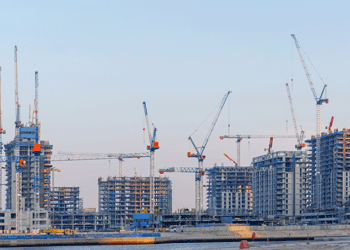 Managing risk in the GCC construction market
Managing risk in the GCC construction market19 December 2025
-
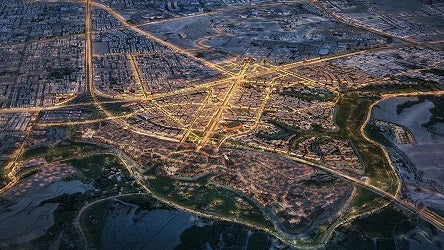 Diriyah signs land lease deal with King Saud University
Diriyah signs land lease deal with King Saud University19 December 2025
-
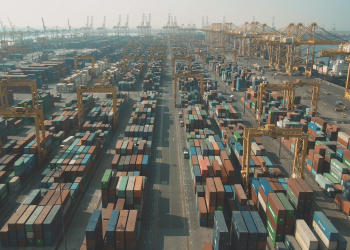 Kuwait to sign Mubarak port agreement next week
Kuwait to sign Mubarak port agreement next week19 December 2025
-
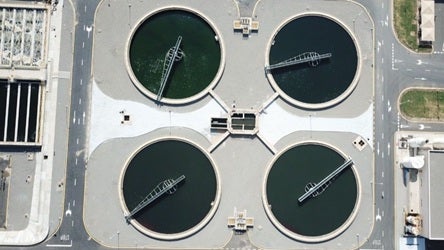 Metito consortium wins Mecca sewage scheme
Metito consortium wins Mecca sewage scheme19 December 2025
-
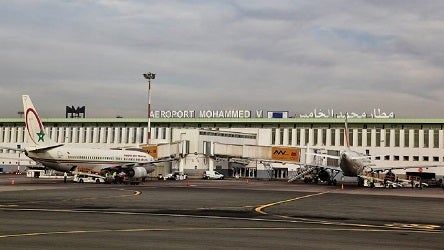 Morocco awards $1bn Casablanca airport terminal deal
Morocco awards $1bn Casablanca airport terminal deal19 December 2025
All of this is only 1% of what MEED.com has to offer
Subscribe now and unlock all the 153,671 articles on MEED.com
- All the latest news, data, and market intelligence across MENA at your fingerprints
- First-hand updates and inside information on projects, clients and competitors that matter to you
- 20 years' archive of information, data, and news for you to access at your convenience
- Strategize to succeed and minimise risks with timely analysis of current and future market trends

Related Articles
-
 Managing risk in the GCC construction market
Managing risk in the GCC construction market19 December 2025

The scale and complexity of construction projects under way in the GCC region has attracted global attention. And while large-scale project announcements continue to dominate the headlines, the underlying risks – insufficient financing, harsh contract clauses and a tendency to delay dispute resolution – are often overlooked.
Around the region, many contractors are experiencing difficulties once projects have started because they mistakenly believe they have the necessary in-house skillsets to navigate these complex issues.
MEED has convened a panel of construction consultants and specialists to develop a checklist to help contractors and subcontractors operating in the region to navigate the market’s challenges as the sector moves into 2026.
The proactive steps are aimed at positioning a company so that it can maximise recovery and mitigate threats posed by unresolved claims and poor commercial or contractual administration.
Systemic risk
The regional market is characterised by several systemic issues that amplify risks for contractors.
The fundamental problem is finance. Projects frequently suffer because they are not fully financed from the start, which places financial strain on contractors. This problem is then compounded by the region’s traditional contractual environment, which means disputes are typically not finalised until well after jobs have been completed, creating cash flow problems for contractors, particularly near the end of such projects.
Further financial strain is created by unconditional performance guarantees and retention. The combined requirement for advance payment bonds, a 10% performance bond and sometimes 5%-10% retention represents a significant draw on contractors’ cash flow. The growing tendency of employers to pull bonds further exacerbates the situation.
Many contractors sign up to one-sided contracts so as to secure more work, rather than challenging their employers. Key contractual issues include:
> Unrealistic timelines: Contractors set themselves up to fail by accepting unrealistic timescales on projects, despite the knowledge that the work often takes twice as long.
> Deficient design: A major risk, particularly on high-profile projects, is a lack of specification and design progress. Many contracts, such as the heavily modified Silver Book – a standard contract published by the International Federation of Consulting Engineers (Fidic) for turnkey engineering, procurement and construction projects – presuppose that the contractor has sufficient information to design, build and deliver, even when there is substantive information missing, which renders lump-sum pricing obsolete and inevitably leads to dispute.
> Lowest-bid mentality: Contractors often fail to factor necessary commercial support from legal and claims specialists into their tender figures, making their bid appear more competitive but leaving them without a budget to seek help until it is too late. As a result, projects are managed with budgets that are barely sufficient, rather than being run properly to a successful conclusion.

Supply-chain erosion
The quality and capacity of the subcontractor market, particularly in the mechanical, electrical and plumbing (MEP) field, has eroded significantly.
Some major MEP players have closed or left the market due to underpricing, prompting contractors to call in their performance bonds. This means the region is receiving progressively lower quality for increasingly higher costs, further straining the delivery phase for main contractors.
The risk of subcontractor insolvency is increasing and must now be considered a primary project risk. Contractors should monitor financial health, diversify subcontractor dependencies, challenge allocated resources and secure step-in rights wherever possible.
Many Silver Book contracts in the GCC now include heavily amended, employer-friendly clauses that push design and ground-risk even further onto the contractor – often beyond what Fidic intended. These amendments require careful review and firm pushback.
The GCC remains a market of opportunity, but success in 2026 will belong to contractors that combine disciplined tendering, transparent commercial governance and early issue resolution. Optimism is not a strategy; preparation is.
A 10-point checklist for contractors in 2026
1. Mandate contractual due diligence: Invest time and money into a thorough contract review before signing. Be prepared to challenge harsh clauses, particularly those unfairly allocating risk, such as unknown conditions and full design responsibility. Assume that bespoke rather than standard amendments govern your entitlement. Treat the special conditions as the real contract.
2. Factor commercial support into the budget: Do not omit the cost of essential commercial support from the tender, such as quantity surveyor teams, quantum and delay specialists, legal review and claims preparation. Even if not visible in the front-line figures, this cost – which could be as low as 0.01% of the project value – must be factored in to ensure a budget for early and continuous engagement.
3. Prepare a realistic baseline programme: Stop committing to programmes just to fit the tender. Develop a realistic programme from the start, identifying risks and including necessary code books to track delays early. Consider commissioning an independent programme review at the tender stage – this is common internationally and reduces later arguments about logic, durations and sequencing.
4. Confirm project funding: Ensure that the project financing is fully in position before starting work. Many problems stem from projects that are only partially financed, leading to cash running out near completion. Gone are the days of not asking employers for greater transparency when it comes to funding projects.
5. Establish a strong commercial and claims function: This is where commercial management starts. Set up systems to ensure contractual compliance, including seven-day claim notifications. Variations are inevitable, and proper substantiation is required to secure entitlement – if it is not recorded, it cannot be recovered. Diaries, cost records and notice logs remain the foundation of entitlement.
6. Seek early specialist engagement: Prevention is better than a cure. Bring in specialists early to examine time and cost issues before problems arise. Consultants can provide advice, help set up the correct commercial systems and prevent the escalation of unresolved issues.
7. Adopt an old-school approach to claims management: Technology is useful, but nothing beats resolving issues face to face. Engage directly with the employer’s team regularly to negotiate and agree claims early. This manages the client’s expectations when it comes to budgeting and allows the contractor to secure cash flow sooner. A simple early-warning culture – even when not contractually required – prevents surprises and builds trust with the client.
8. Avoid wasting resources: Focus claims efforts only on events that are actually recoverable and demonstrably critical. Contractors often waste time chasing things that will not be recoverable. Prioritise issues that are both time-critical and clearly fall under the employer’s risk – everything else should be logged but not pursued aggressively.
9. Upskill internal teams: Use specialist involvement as an opportunity to upskill your in-house commercial team. Have them sit alongside specialist consultants to learn proper commercial and contractual administration processes, creating a lasting work-culture benefit.
10. Push for faster dispute resolution: When a dispute arises, advocate for a swift resolution mechanism like adjudication, mediation or expert determination to temporarily resolve cash flow issues. Dispute adjudication boards are intended to give quick, interim decisions. However, if not set up from the start of the project, the process becomes protracted – sometimes taking many months – so fails to provide the cash-flow relief contractors urgently need. Where clients resist adjudication, propose interim binding mediation or expert determinations, or failing this, milestone-based dispute workshops – anything that accelerates getting cash back on site. MEED would like to thank Refki El-Mujtahed of REM Consultant Services (refki@rem-consultant.com; www.rem-consultant.com) for facilitating this article, as well as the following co-contributors:
Aevum Consult | Lawrence Baker | lawrence.baker@aevumconsult.com | www.aevumconsult.com
Decerno Consultancy | Lee Sporle | leesporle@decernoconsultancy.com | www.decernoconsultancy.com
Desimone Consulting | Mark Winrow | Mark.Winrow@de-simone.com | www.de-simone.com
Forttas | Derek O’Reilly & Martin Hall | derek.oreilly@forttas.com & martin.hall@forttas.com | www.forttas.com
IDH Consult | Ian Hedderick | ian.hedderick@idhconsult.com | www.idhconsult.com
White Consulting | Nigel White | nigelwhite@whiteconsulting-me.com | www.whiteconsulting-me.com
https://image.digitalinsightresearch.in/uploads/NewsArticle/15289183/main.gif -
 Diriyah signs land lease deal with King Saud University
Diriyah signs land lease deal with King Saud University19 December 2025
Saudi Arabia gigaproject developer, Diriyah Company, has signed a long-term land lease agreement with Riyadh Valley Company, an investment arm of King Saud University.
Diriyah Company will lease 552,000 square metres (sq m) of land from King Saud University for a period of 70 years.
The deal will enable the company to add the land bank to its second phase of the Diriyah Project, which is also known as DG2.
The agreement was signed by Diriyah Company's Group CEO, Jerry Inzerillo, and the acting president of King Saud University and Riyadh Valley Company chairman, Ali Masmali.
Diriyah Company is already developing the area adjacent to King Saud University. In April, it awarded an estimated SR4bn ($1.1bn) contract for a utilities relocation package for the King Saud University project located in the second phase of the Diriyah Gate development (DG2).
The contract was awarded to the joint venture of Beijing-headquartered China Railway Construction Corporation and China Railway Construction Group Central Plain Construction Company.
The scope of the contract covers the design, construction and relocation of KSU's utilities and administration offices, as well as the construction of a district cooling plant, water storage facilities, a sewage treatment plant, a natural gas plant, a diesel transfer pumping station, a utility tunnel, irrigation water storage tanks, office buildings, warehouses and maintenance workshops.
In addition to KSU, DG2 will feature residential developments, hotels, an opera house, the Saudi Museum of Contemporary Art, six academies, an arena and a mosque.
The Diriyah masterplan envisages the city as a cultural and lifestyle tourism destination. Located northwest of Riyadh’s city centre, it will cover 14 square kilometres and combine 300 years of history, culture and heritage with hospitality facilities.
https://image.digitalinsightresearch.in/uploads/NewsArticle/15287776/main.jpg -
 Kuwait to sign Mubarak port agreement next week
Kuwait to sign Mubarak port agreement next week19 December 2025
Kuwait and China are expected to sign the agreement to develop the subsequent phases of Kuwait’s Grand Mubarak Port next week.
According to media reports, the announcement was made by Kuwait’s Public Works Minister Noura Al-Mashaan on Thursday.
The contract value is estimated to be about KD1.2bn ($4bn).
In May, Beijing-headquartered China Harbour Engineering Company, a subsidiary of China Communications Construction Company (CCCC), signed an early contractor involvement (ECI) agreement with Kuwait to develop the next phases of the project.
The initial works include surveying, investigation, hydrological observation, geophysical exploration, testing, model testing, process simulation, design review, owner inspection, preliminary design of sand-retaining embankments, and on-site services and management.
The project launch ceremony was held in mid-April. It was attended by several high-profile representatives from Kuwait and China, including Fu Xuyin, China’s vice-minister of the Ministry of Transport, Zhang Jianwei, the Chinese ambassador to Kuwait, and Nora Mohammad Al-Mashaan, Kuwait’s minister of public works.
In January, MEED reported that Kuwait’s cabinet had approved a bid from China Communications Construction Company to implement all stages of its Mubarak Al-Kabeer Port project.
The country ramped up its efforts on the project after meetings between Kuwaiti and Chinese officials in June last year.
In 2023, the two countries signed a memorandum of understanding to develop port infrastructure.
Phase one of the project cost $1.2bn and was completed in 2014.
The project’s first phase included site levelling and the development of a marina, quay walls, berths, a navigational terminal and port buildings.
The port is not operational because the phase one works did not include vital equipment such as cranes.
It is understood that the completion of phase two will allow the port to start operations.
The full scope for phase two of the project is expected to include:
- Construction of loading and unloading facilities
- Construction of quay walls and reclamation
- Construction of the container yard and the back of the port
- Infrastructure works
- Construction of buildings
- Construction of a container terminal
- Construction of associated facilities
- Installation of safety and security systems
A third phase is also planned to further expand the port.
The latest developments follow a series of agreements signed in September 2023 to deliver some of Kuwait’s immediate development goals for 2024-28. These agreements will position Chinese companies to play a leading role in the Fourth Kuwait Master Plan 2040.
https://image.digitalinsightresearch.in/uploads/NewsArticle/15287252/main.jpg -
 Metito consortium wins Mecca sewage scheme
Metito consortium wins Mecca sewage scheme19 December 2025
A team comprising Metito (UAE), Etihad Water & Electricity Company (UAE) and SkyBridge Company (UK) has been awarded a contract to develop the Hadda independent sewage treatment plant (ISTP) project in Mecca Province, Saudi Arabia.
The contract was awarded by Saudi Water Partnership Company (SWPC), the kingdom’s principal off-taker for water and wastewater public-private partnership (PPP) projects.
The project will be developed on a build-own-operate-transfer basis and is expected to begin operations in 2028, followed by a 25-year operating term.
The plant will provide an initial treatment capacity of 100,000 cubic metres a day and will feature a treated sewage effluent (TSE) reuse system with a storage tank and a 38-kilometre pipeline designed to handle 350,000 cubic metres a day.
Earlier in December, MEED reported that the team had been named preferred bidder at a levelised tariff of SR2.354 ($0.63) a cubic metre.
SWPC selected the Miahona-led consortium as the reserve bidder for this project with the second-lowest submitted bid of SR2.599($0.69) a cubic metre.
According to SWPC, the TSE reuse system accounted for 31% of the preferred tariff for the Arana ISTP and 27% for the Hadda ISTP.
In March last year, SWPC signed a 25-year water-purchase agreement with a team comprising the local Miahona Company and Belgium-based Besix for the contract to develop and operate the Al-Haer ISTP in Riyadh, as part of the third batch of the kingdom’s ISTP programme.
Four months later, the Saudi-listed Power & Water Utility Company for Jubail & Yanbu (Marafiq) joined the developer consortium.
The Miahona/Besix team offered to develop the project for SR1.9407 ($0.5173) a cubic metre, while the second-lowest bid, from a team comprising Spain’s Acciona and the local Tawzea, was SR2.2041($0.588) a cubic metre.
https://image.digitalinsightresearch.in/uploads/NewsArticle/15287185/main.jpg -
 Morocco awards $1bn Casablanca airport terminal deal
Morocco awards $1bn Casablanca airport terminal deal19 December 2025
Morocco’s National Airports Office (ONDA) has awarded a MD12bn ($1.2bn) contract to build the new terminal at Casablanca’s Mohammed V International airport.
The contract was awarded to the joint venture of local firms Societe Generale des Travaux du Maroc (SGTM) and Travaux Generaux de Construction de Casablanca (TGCC).
Construction work on the Mohammed V International airport expansion is expected to begin immediately.
The project is slated for completion in 2029.
The expansion will cover more than 600,000 square metres (sq m) and increase the airport’s capacity to 30 million passengers a year.
The project is designed by a consortium comprising the local branch of French engineering firm Egis Batiment International, Morocco’s Ala Concept and UK-based RSHP Architects.
The scope of work covers preparatory works, structural works, waterproofing, steel structural works, building facades, electrical, mechanical and plumbing (MEP) works, data centre works, HVAC systems and other associated works.
The tender also covers the construction of a 300-key airside hotel.
The new terminal is expected to be ready in time for the 2030 Fifa World Cup, which Morocco is co-hosting alongside Portugal and Spain.
ONDA tendered the project contract on 4 November, with a bid submission deadline of 16 December, as MEED reported.
In July, ONDA began early works on the new terminal building, awarding an estimated MD294m ($29m) deal for enabling works to local firm Societe de Travaux Agricoles Marocaine.
In January, Morocco’s Transport & Logistics Minister, Abdessamad Kayouh, said that the study to expand the airport’s capacity was nearing completion.
The project is part of Morocco’s MD42bn ($4.3bn) plan to expand key airports in anticipation of increased passenger flow for the 2030 football World Cup.
Morocco plans to upgrade several airports, including those in Tangier, Marrakech and Agadir, increasing their respective annual passenger capacities to 7 million, 16 million and 7 million.
There are also plans to add a new terminal at Rabat-Sale airport, raising its capacity to 4 million passengers annually, and to increase Fez airport’s capacity to 5 million passengers annually.
The new terminal at Mohammed V International airport will be connected to a high-speed train network linking Kenitra to Marrakech.
 READ THE DECEMBER 2025 MEED BUSINESS REVIEW – click here to view PDF
READ THE DECEMBER 2025 MEED BUSINESS REVIEW – click here to view PDFProspects widen as Middle East rail projects are delivered; India’s L&T storms up MEED’s EPC contractor ranking; Manama balances growth with fiscal challenges
Distributed to senior decision-makers in the region and around the world, the December 2025 edition of MEED Business Review includes:
> AGENDA 1: Regional rail construction surges ahead> INDUSTRY REPORT 1: Larsen & Toubro climbs EPC contractor ranking> INDUSTRY REPORT 2: Chinese firms expand oil and gas presence> CONSTRUCTION: Aramco Stadium races towards completion> RENEWABLES: UAE moves ahead with $6bn solar and storage project> INTERVIEW: Engie pivots towards renewables projects> BAHRAIN MARKET FOCUS: Manama pursues reform amid strainTo see previous issues of MEED Business Review, please click herehttps://image.digitalinsightresearch.in/uploads/NewsArticle/15287093/main.jpg



